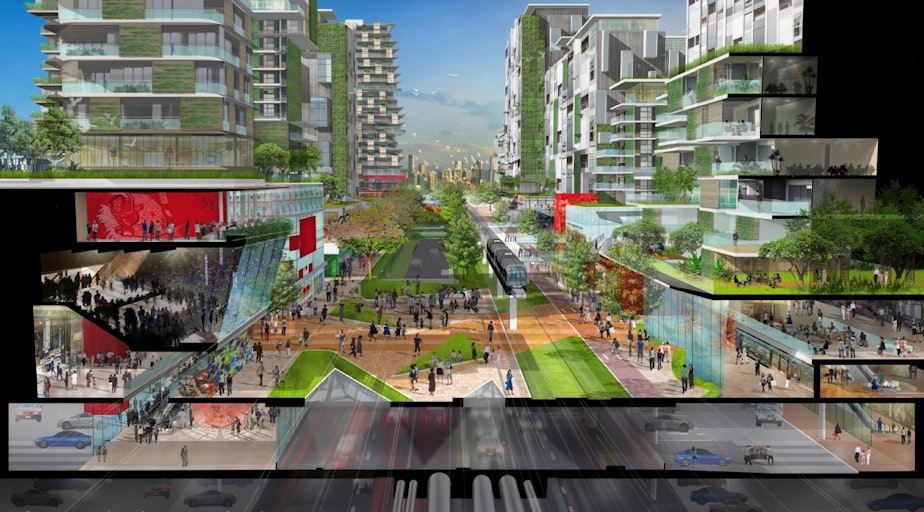Pacific Northwest needs 4 new cities on undeveloped land, report says

Imagine new high rises – above the Pacific Northwest’s small communities like Burlington and Centralia.
That may sound far-fetched, but it might be necessary if we’re going to accommodate all the people moving to the region over the decades to come, according to a new report by the Cascadia Innovation Corridor.
Former Washington Governor Christine Gregoire, along with her peers around the region, recently published a study that argues the Northwest has a problem -- it needs four new large cities. Otherwise, there won't be enough room.
Unless existing cities like Seattle are willing to bulldoze 40% of their single family homes, those cities won’t grow dense enough to fit all the people coming to the area in the next few decades. Because of this, housing will get more expensive, urban sprawl will increase and emissions will rise, the report says.
The study’s authors don’t say exactly where these new cities should go, except they need to be at least 40 miles outside existing urban areas, in order to keep land costs down. They recommend that by 2035, the region should have found spots for them and started digging.
Other regions are less constrained by mountains and water, as is the Northwest. They can sprawl outward, which keeps home prices down at the cost of higher emissions. But that approach is less practical in the Northwest, even if the region was willing to compromise on emissions, the report says.
Instead, it says the region needs four new cities that can accommodate 300,000 to 400,000 people, along with 200,000 jobs each, built densely around fast mass transit.
Sponsored
The approach sounds unprecedented, but it's not. As an example, the report singled out Forest City, a new city currently being built on a planned high-speed rail line connecting Singapore with Kuala Lumpur, in Malaysia. The new city is designed to fit 700,000 people by the year 2050.
Here in the Pacific Northwest, that could translate to tall towers rising up next to a high speed railway station, on former outlet mall land, next to the freeway just outside of Mt. Vernon. Or it could mean giant apartment blocks and office towers rising above a rail station near the sawmills of Longview, Wash.
Earlier attempts to build clusters of jobs and housing outside cities did not result in decreased traffic and emissions, in part because even when jobs and homes are located near each other, many people still work in one place and live somewhere else, commuting long distances in between. Critical to this plan's success will be enticing people to use transit rather than drive, should they still choose to commute.

